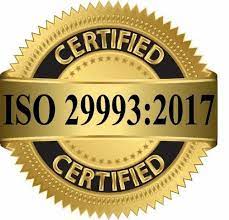
|
|
The Industrial Revolution began in Europe in the late 18th and early 19th centuries, and it quickly spread to the United States. By 1860, when Abraham Lincoln was elected president, 16 percent of the U.S. population lived in urban areas, and a third of the nation's income came from manufacturing. Urbanized industry was limited primarily to the Northeast; cotton cloth production was the leading industry, with the manufacture of shoes, woolen clothing, and machinery also expanding. Many new workers were immigrants. Between 1845 and 1855, some 300,000 European immigrants arrived annually. Most were poor and remained in eastern cities, often at ports of arrival. The South, on the other hand, remained rural and dependent on the North for capital and manufactured goods. Southern economic interests, including slavery, could be protected by political power only as long as the South controlled the federal government. The Republican Party, organized in 1856, represented the industrialized North. In 1860, Republicans and their presidential candidate, Abraham Lincoln were speaking hesitantly on slavery, but they were much clearer on economic policy. In 1861, they successfully pushed adoption of a protective tariff. In 1862, the first Pacific railroad was chartered. In 1863 and 1864, a national bank code was drafted. Northern victory in the U.S. Civil War (1861-1865), however, sealed the destiny of the nation and its economic system. The slave-labor system was abolished, making the large southern cotton plantations much less profitable. Northern industry, which had expanded rapidly because of the demands of the war, surged ahead. Industrialists came to dominate many aspects of the nation's life, including social and political affairs. The planter aristocracy of the South, portrayed sentimentally 70 years later in the film classic Gone with the Wind, disappeared. Inventions, Development, and Tycoons The rapid economic development following the Civil War laid the groundwork for the modern U.S. industrial economy. An explosion of new discoveries and inventions took place, causing such profound changes that some termed the results a "second industrial revolution." Oil was discovered in western Pennsylvania. The typewriter was developed. Refrigeration railroad cars came into use. The telephone, phonograph, and electric light were invented. And by the dawn of the 20th century, cars were replacing carriages and people were flying in airplanes. Parallel to these achievements was the development of the nation's industrial infrastructure. Coal was found in abundance in the Appalachian Mountains from Pennsylvania south to Kentucky. Large iron mines opened in the Lake Superior region of the upper Midwest. Mills thrived in places where these two important raw materials could be brought together to produce steel. Large copper and silver mines opened, followed by lead mines and cement factories.
As industry grew larger, it developed mass-production methods. Frederick W. Taylor pioneered the field of scientific management in the late 19th century, carefully plotting the functions of various workers and then devising new, more efficient ways for them to do their jobs. (True mass production was the inspiration of Henry Ford, who in 1913 adopted the moving assembly line, with each worker doing one simple task in the production of automobiles. In what turned out to be a farsighted action, Ford offered a very generous wage -- $5 a day -- to his workers, enabling many of them to buy the automobiles they made, helping the industry to expand.)
|
|
|
|
|
|
|
|
|
"We now accept the fact that learning is a lifelong process of keeping abreast of change. And the most pressing task is to teach people how to learn." -- Dr. Peter Drucker, Austrian-born American management consultant, educator
|
Home Home Certifications AMC® Training Council Continuing Ed Awards Careers Board Government Jobs Membership Ethics Handbook Events Benefits Exam Sample Omicron Chi News Accredited Degrees Management Degrees Accounting Degrees Financial Analyst Degrees Human Resource Degrees Application Links Disclaimer

Accreditation Bodies: www.GAFM.com * www.GAFM.org * www.CertifiedProjectManager.eu * www.AAFM.org * Certified Project Manager * Certified e-Commerce Consultant *Royal Law Society *Royal Business Society*Royal Business College*Royal Fellows*Royal Economics Academy*Oxford Law School*AAFM*Certified International Project Manager *

